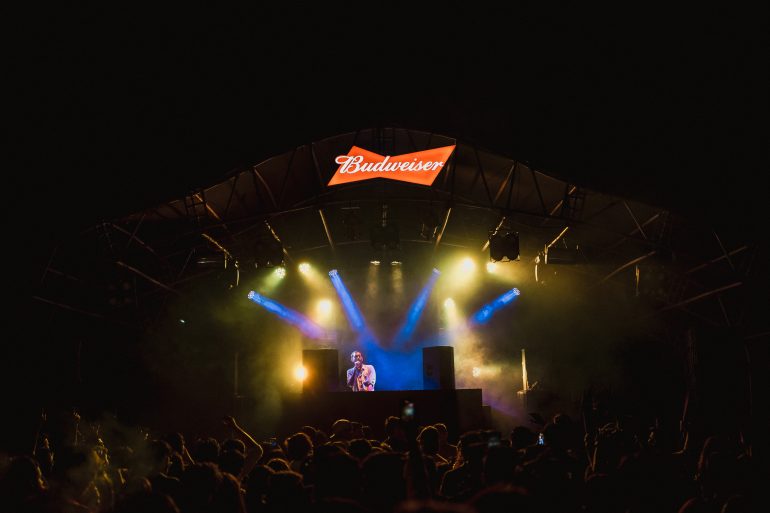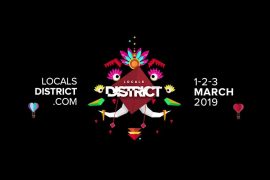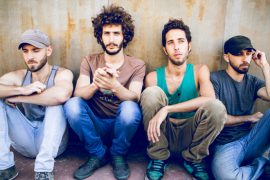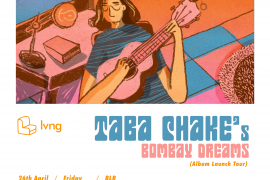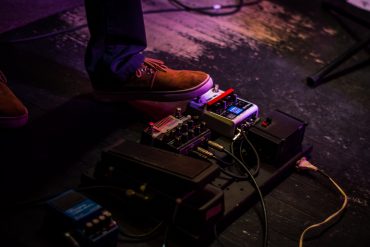As the number of music festivals, and the equally impressive crowds seen at them, have swelled to record figures this season, it might seem like we’re slowly but surely getting to a stage when promoters don’t have to rely so heavily on sponsors as they have in the past. when their contribution accounted for as much as 70% of the event’s cost. Encouragingly, Lollapalooza made 60% of its revenue from ticket sales and only 25% from brand sponsorships and partnerships. But that’s not the case for the majority. Even today, the split averages to around 60% sponsorship and 40% ticket sales.
“If there is no sponsorship, trust me, there is no festival,” says Schubert Fernandes, avid gig-goer, and chief client officer at public relations company MSLGROUP whose clients include Budweiser and which previously handled Bacardi. “It’s impossible for any organiser to put up a festival [otherwise].”
While the quantity of festivals and even stand-alone nationwide tours has shot up, the number of brands willing to back them hasn’t quite kept pace. “[Finding sponsors has] not become any easier,” says Roydon Bangera, chief business officer at Skillbox. “There are only about six to seven [major] brands, if you look at bigger festivals.”
The category that fuels the music festival sector
Just as we keep seeing the same bunch of names as headliners at Indian music festivals, we see a familiar set of brands at almost every such event. Of course, I had to find which brand sponsored the most festivals and scoured their Instagram pages for logos and stage names. If you’re a regular fest attendee, you’re unlikely to be surprised that, as per my tally at least, it’s Budweiser.
The beer has helped bankroll everything from the electronic music-centric DGTL, Echoes of Earth and Magnetic Fields to the more multi-genre HG Street, Lollapalooza and Vh1 Supersonic. Other logos you might have spotted frequently are those of Bacardi, Johnnie Walker and Nexa.
It’s also not surprising that three out of these four are alcohol brands. They’ve always had a long association with music. In the pre-streaming era, when major music festivals were few and far between in India, you’d often see TV and print ads for compilation CDs put out by the likes of Royal Stag whisky and Smirnoff vodka. Those were innovative means of surrogate advertising to a target audience, but they weren’t quite as effective as an in-person extravaganza.
“Alco-bev, to a large extent, is a low involvement category – you don’t wake up and think, ‘Today, I want to go have this brand of beer or alcohol’ till the point when you come to the moment of consumption,” says Ankit Kataria, director – marketing at Budweiser parent Anheuser-Busch InBev. “Despite this, brand loyalty is extremely high, and it takes a certain number of trials, approximately six to eight pints, for that brand loyalty to build. Music festivals help us create this environment where we’re able to generate these trials and create that connection with the consumers.”
The types of sponsorships
There are various kinds of sponsorships a brand can go in for, and Budweiser has experimented with all. At the top of the tier is the title sponsor, which almost always means the name of the brand is part of the festival and/or a stage/stages are named after them. Next is the ‘powered by’ sponsor, sometimes called the ‘presenting’ sponsor or celebration partner’.
Typically, approximately 60% of the total sponsorship comes from the title sponsor, 30% from the ‘powered by’ sponsors and about 10%, from associate sponsors, according to Bangera. A title will get the most ‘deliverables’ or things they expect in return. “They will get the best stage, the best bars and the festival will push the sponsor as well so you get more impressions and more trials,” says Kataria.
Generally, the ‘powered by’ sponsor is also given a stage, and between 60% to 70% of what the main sponsor receives. “You could choose just the stage or just the bars or just the VIP area.” The associate sponsor, on the other hand, is granted a spot on the main poster and rotations on the LED displays next to the stages, and other forms of branding and activations at the venue.
A brand will decide the type of sponsor they want to be depending on their aims. “If my objective is to just drive trials, I’ll probably be an associate sponsor, and have my bars and stock show up,” Kataria says.
Getting bang for their buck
The ‘impressions’ refer to the digital reach of the festival through both paid ads and social media posts by the promoter, musicians, music fans and influencers. Before they sign on, brands will send organisers sponsorship evaluation documents that include the extent of coverage on different media such as radio, TV, print and online publications, outdoor advertising and presence on-ground.
“As part of our deal with Supersonic, we got TV spots on the channel Vh1,” Kataria says. “Lollapalooza and Supersonic bought hoardings across Mumbai and Pune and our logo was present there.” On site, ‘impressions’ translates to how many times an attendee is exposed to a brand, right from the box-office where they go buy their ticket to their band that bears the logo to inside at the stages and bars or areas in between.
Most often, alcohol brands will not just want a bar, but for only their portfolio of products to be sold at the venue if they’re the title sponsor. This is the reason why there’s no beer at Weekender, for instance.
However, there are some requests that promoters will decline. “Brands often ask for artists’ involvement with the product,” says Bangera. “That is something promoters don’t encourage. We often tell them to go the contest route where they can run a meet and greet with the artist. Product placements often go into an endorsement space.”
After the event, brands calculate their return on investment on the basis of a number of factors, mainly the footfalls, sales and trials they were able to generate. However, these factors can differ from festival to festival. “Magnetic Fields is a niche festival with a certain set of audiences who are opinion shapers so there our benchmarks of return on investment will be much different to a Supersonic, which caters to 60,000 people, a much wider audience,” says Kataria who adds that “whether a festival has worked or not is hard-coded in terms of key performance indicators.”
The level of engagement is another key metric. “Our primary criteria to evaluate the success of our events has always tied back to how consumers are engaged with the experience,” says Sameeksha Uniyal ,senior brand lead at Bacardi India and South-East Asia. “The Bacardi NH7 Weekender, for instance, has been a proven growth driver for us due both to its attendance and its cultural impact on the Indian music scene. The conversations that it gives rise to, and the public perception of the IP is also a meaningful indicator of success [which] also shows itself through increased engagement on social media platforms and positive online sentiment towards the event.”
Bangera believes that showcasing the association of a brand with a festival through meaningful content is something that brands really look forward to today. “It’s not just about the day of the event anymore,” he says. “Translating it into content onto digital platforms is very important too. Brands often use that content to build on social media campaigns for themselves and as a way of connecting with their target audiences.”
This is because most brands across categories associate with a festival or genre because they want to tap the community around it. Budweiser, for instance, has had a long association with electronic music; Bacardi with indie. Nexa wants to be known as a brand that supports independent music in English. Signature, currently, is focused on being seen as an eco-friendly brand and has a music property called Green Vibes.
While the struggle remains for organisers, on the plus side, it’s become far easier to start conversations, Bangera says. “The access points have increased because younger brand managers also are coming into the equation who understand culture and that sponsorship is more than just logo presence.”
